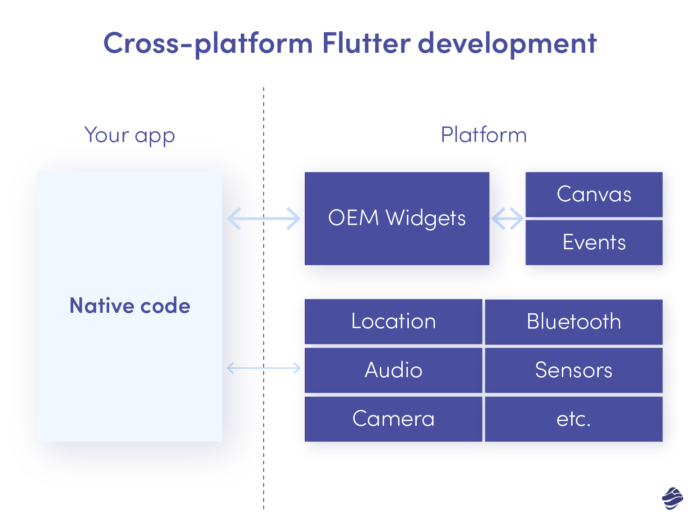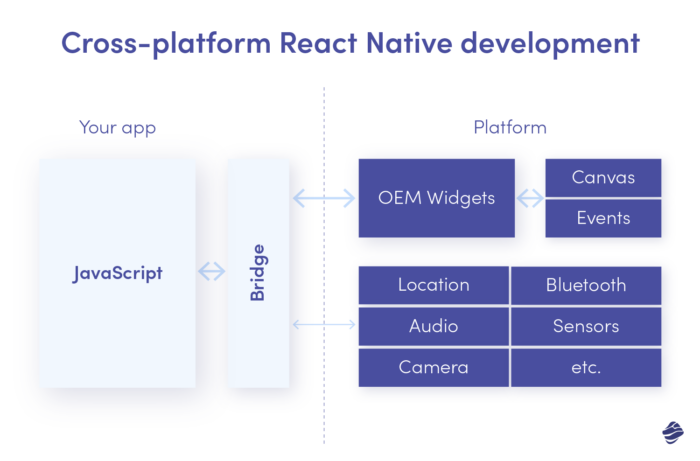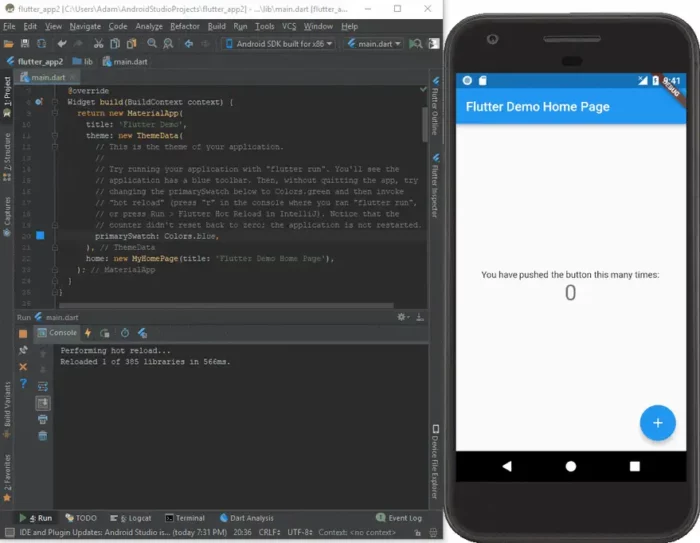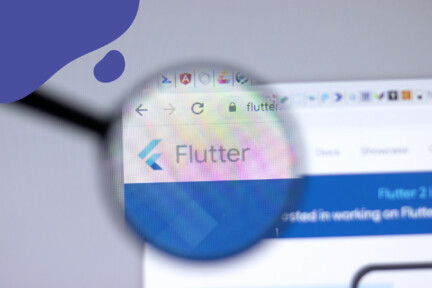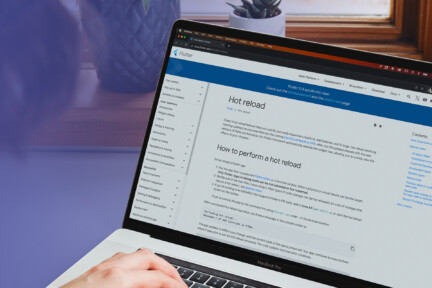Is Flutter a programming language? This question pops up frequently in tech circles. Flutter, with its rising popularity, often blurs the lines in understanding its true nature.
This article aims to clear the air around that topic. Keep reading as we dive deeper into what Flutter is, its relationship with Dart, and how it stands apart from other technologies. We’ll also debunk common myths, explore its numerous benefits, and provide real-world examples to showcase its versatility.
What exactly is Flutter?
Flutter is not a programming language, it is a robust UI toolkit developed by Google. This toolkit is designed for building beautiful, natively compiled applications for mobile, web, and desktop platforms. It enables developers to create visually appealing and highly functional apps from a single codebase.
But why do people often mistake Flutter for a programming language? This confusion typically stems from its seamless integration with Dart, a programming language also developed by Google.
Understanding Flutter’s true nature is crucial for developers. This UI framework provides a rich set of pre-designed elements, tools, and capabilities to build apps. These elements include everything from buttons and text fields to complex animations and gestures.
Unlike traditional programming languages that define the logic and functionality of applications, Flutter focuses on the app design and front-end aspects.
So, is Flutter a programming language? No, but it’s a gateway to creating exceptional user experiences (UX).
The Role of Dart in Flutter
So, what role does Dart play in the Flutter ecosystem? Dart is the programming language Flutter uses. It serves as the foundation upon which Flutter’s framework is built.
Unlike Flutter, which focuses on the user interface, Dart is responsible for the underlying logic and functionality of the apps. It’s a modern, object-oriented language that is easy to learn.
Common Misconceptions about Flutter
Flutter is often shrouded in misconceptions that can lead to confusion. Let’s address some of these misconceptions:
- Flutter is a programming language – This is one of the most common myths and it’s a fundamental misunderstanding. As we’ve established, Flutter is a UI toolkit, not a programming language.
- Flutter is only suitable for the mobile app development process – While it’s true that Flutter started as a mobile-first framework, it has evolved significantly. Today, Flutter is a popular tech stack of any cross-platform app development company used for building products across multiple platforms.
- Flutter applications are inherently lower in quality compared to native apps – This couldn’t be further from the truth. The combination of Flutter and Dart allows developers to create apps that are both high-performing and visually appealing, often matching native applications in speed and functionality.
Flutter’s ability to compile to native code means that apps built with Flutter can achieve native performance on both iOS and Android.
Let’s now look at how Flutter compares to other similar technologies.
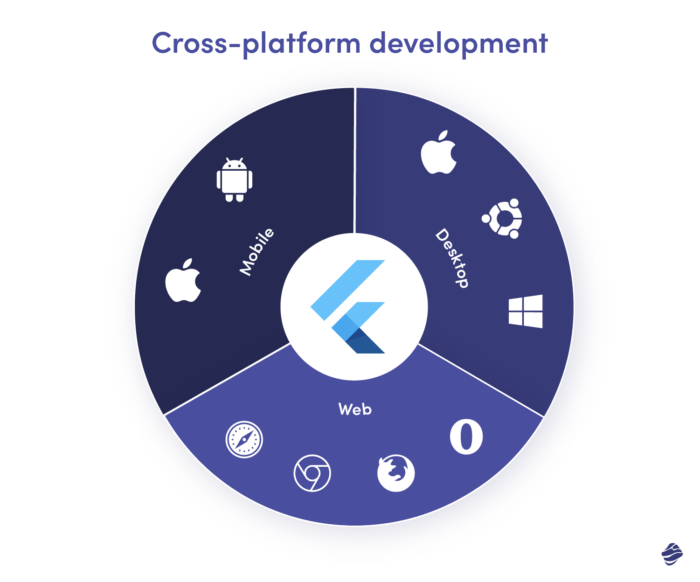
Comparing Flutter to Other Technologies
Flutter has several unique features and capabilities that make it stand out from other Software Development Kits (SDKs) like React Native, Xamarin, Android SDK, and iOS SDK.
For example, Android and iOS SDKs often require separate codebases for each platform. Meanwhile, Flutter’s single codebase approach allows developers to write code once and deploy it across multiple platforms, including iOS and Android. This unified codebase simplifies the development process, reducing complexity and time.
Flutter also has superior performance over frameworks like React Native or Xamarin, thanks to its compiled native language (Dart) and its rendering engine, Skia.
Dart defines app logic, structure, and behavior, and works in tandem with Skia, which directly controls the UI rendering. This bypasses the need for a “bridge” to communicate with native components, hence optimizing rendering performance.
Here is an illustration of this:
And here is what it would look like with React Native.
As a result, Flutter delivers smoother animations, complex UI layouts, and a more responsive user experience. In contrast, React Native uses JavaScript and relies on a bridge for communication with native components, which can introduce delays, particularly in complex UIs or computation-heavy tasks.
Benefits of Using Flutter
One of the most significant advantages of Flutter is its cross-platform capabilities. This feature lets you create a unified codebase that functions smoothly on both iOS and Android platforms. The result? Software companies can streamline development and cut down on the time and cost of maintaining different codebases for each platform.
Here’s a list that captures other core benefits of using the Flutter framework:
- Extensive range of customizable widgets
- Efficient UI/UX development with Flutter’s UI toolkit
- Compiled native language and own rendering engine
Additionally, its hot reload feature significantly speeds up the development cycle. This feature allows Flutter developers to see changes in real time without restarting the app.
This little function makes programming easier and allows for quicker adjustments and more dynamic project evolution.
Use Cases of Flutter
The importance of Flutter for web development cannot be overstated. Its versatility is showcased through its wide range of use cases across various industries.
One prominent example is in the eCommerce industry. Major eCommerce brands like eBay and Alibaba are turning to Flutter to create fluid, responsive, and visually appealing shopping websites. These websites need to handle a variety of tasks, from displaying product galleries to managing complex transactions. Flutter enables a smooth UX, even with rich media content and interactive elements.
Another significant area where Flutter app development shines is in the fintech sector. The financial technology sector demands high security, reliability, and seamless performance, all of which are strengths of Flutter. Coupled with Dart, this UI toolkit is capable of handling complex calculations and secure transactions, making it a reliable choice for banking apps, investment platforms, and payment gateways.
Flutter is also making waves in the entertainment and media industry. Media apps, particularly those offering streaming services, require a high level of performance to handle video playback and real-time data. Flutter’s efficient rendering engine and its ability to compile to native code ensure that these apps can deliver content smoothly and efficiently.
From gaming apps to on-demand video services, Flutter’s ability to provide a high-quality, consistent experience across devices is highly valued in this field.
Learning Curve and Accessibility of Flutter
When it comes to learning and adopting new technologies, ease of use and accessibility are crucial factors. Flutter is beginner-friendly, especially for those with some background in object-oriented programming languages.
The language Flutter uses (Dart) is intuitive and straightforward, making it accessible for newcomers to pick up. Dart’s syntax is similar to that of Java and C#, easing the transition for developers familiar with these languages.
Flutter’s extensive documentation and active community of developers further ease the learning process. The framework’s official website provides comprehensive guides, tutorials, and resources. This makes Flutter perfect for developers of different skill levels, from beginners to senior developers.
The tooling and development environment of Flutter is also designed to be user-friendly. Integrated development environments (IDEs) like Android Studio and Visual Studio Code offer excellent support for Flutter. This translates to a smooth and efficient coding process for developers.
In software development, community support is extremely important for overcoming challenges and accelerating the learning journey. This is another area where Flutter shines because it has a vibrant and supportive community. You’ll find numerous forums, online groups, and events where developers seek advice, share their experiences, and exchange tips.
Future Prospects of Flutter
Is Flutter something developers will be using in the future? Flutter’s prospects in the tech industry appear increasingly promising.
One of the key drivers of its future growth is Google’s continuous investment in the framework. This support ensures regular updates and improvements, keeping Flutter at the forefront of cross-platform development technologies.
With each update, Flutter is becoming more versatile and powerful, expanding its capabilities beyond mobile apps to web and desktop applications. The release of Flutter 2.0, is a great example of this commitment. It introduced support for web and desktop applications, significantly broadening Flutter’s scope.
Another aspect shaping Flutter’s future is its growing ecosystem. The availability of a wide range of plugins and packages makes it easier for developers to add complex functionalities to their apps without extensive coding.
Furthermore, Flutter’s alignment with emerging technologies is a strong indicator of its long-term relevance. Its compatibility with IoT (Internet of Things), AR (Augmented Reality), and AI (Artificial Intelligence) makes it a key player in the next wave of technological advancements. This should help developers use Flutter to build applications that are visually stunning, perform competitively, and are integrated with cutting-edge technologies.
Miquido’s Experience with Flutter
Miquido is one of the few companies with vast experience in providing Flutter app development services. Our journey with Flutter shows just how effective the framework can be in creating innovative, high-quality apps across various platforms.
A prime example is the Topline app we built for Abbey Road Studios. This is the first-ever music application that allows artists to instantly and accurately save their musical ideas.
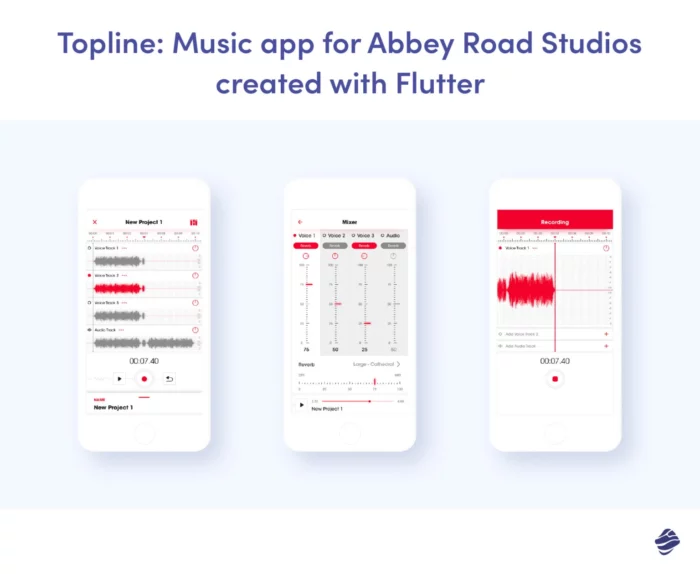
This app allows musicians to record tracks, add lyrics, share files, and sync them to the cloud, optimizing device storage space. Our team created both a native iOS app and its Android version using Flutter in just 10 weeks.
The fitness mobile app Trainn is another excellent example. This application has completely changed digital personal training.
Trainn combines the personalized attention of a personal trainer with the speed, flexibility, and cost-effectiveness of mobile technology. Miquido translated the expertise of personal trainer and entrepreneur Sarah Louise into an advanced algorithm, crafting custom workout plans tailored to individual needs and preferences.
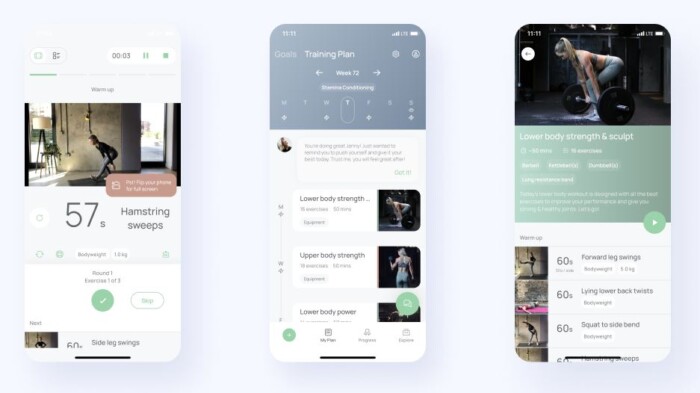
There’s also the Planter app, a mobile application enhanced by AI, that revolutionizes plant care. The app features an object recognition module that identifies plant species from photographs and provides detailed care guidance, considering factors like watering preferences and soil type.
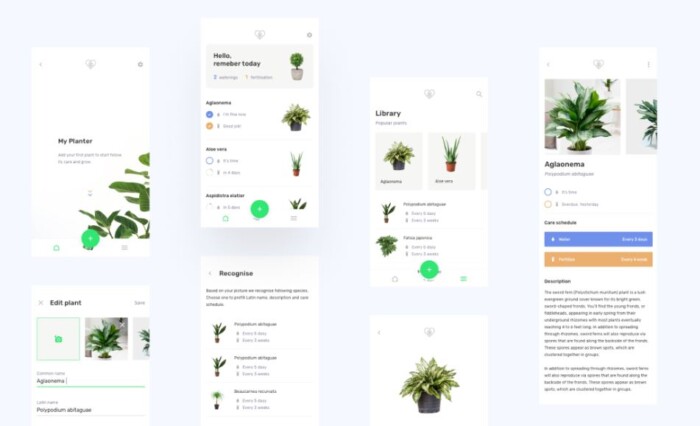
This project involved preparing a dataset, designing a custom recognition model based on a convolutional neural network, and exporting this model to a mobile platform format, all accomplished using Flutter’s versatile capabilities.
Resources for Learning More about Flutter
Several resources are available to help you understand Flutter better. A good starting point is the Flutter website, which provides comprehensive guides, API documentation, and tutorials. This can be particularly helpful for understanding key differences and considerations. For example, it can help you with the “Flutter vs React Native” debate, a common topic among developers.
Miquido also contributes extensively to the community with expert Flutter blog articles. Our blog is particularly insightful on using Flutter for enterprise apps, offering real-world examples and advanced concepts. These resources are essential if you want to stay current with the latest trends, tips, and best practices in Flutter development.
Lastly, it’s always worth searching online for dedicated Flutter meetups, conferences, and online forums to enhance learning through interaction with other developers. These platforms provide fantastic opportunities to ask questions, share experiences, and gain a broader understanding of Flutter in a collaborative environment.
The Truth about Flutter
Is Flutter a programming language? No, it’s a powerful UI toolkit designed for cross-platform application development. So now you know the truth about Flutter.
We’ve also explored its relationship with Dart, debunked common misconceptions, and compared it with other technologies to highlight its unique advantages. From its diverse use cases across multiple industries, Flutter is a versatile and efficient choice for modern app development.
Is Flutter a Programming Language or Framework?
Flutter is a UI Framework, not a programming language. It was developed by Google and allows developers to create cross-platform applications from a single codebase.
Is Flutter Used for Frontend or Backend?
Flutter is a UI toolkit that can be used for both frontend and backend application development. The toolkit works with the programming language Dart to create quality applications efficiently.


